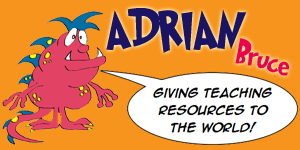
 |
|
Can't
Find Something... Search adrianbruce.com
|
|
|
1. Say these words 'normally' - bah, boo, bump, clank, click, chink, eek, howl, moan, murmur, murmuring, ouch, plop, rattle, rumble, rustle, screech, shuffle, slap, slash, squeak, squelch, tap, thud, thump, tick-tock. 2. Say these words with a partner so they sound really spooky. 3. Create a moody poem about a haunted house by inserting words from the list above into the poem structure below. NB you can insert a few of your own words to help the poem make sense. The
Haunted House (Hint - copy & paste this poetry scaffold into a word processor) 4. Rearrange the lines of the poem so you have your own unique structure and gain maximum 'spookiness'. 5. Read the poem aloud to a friend so it sounds like a shopping
list. 6. Experiment with reading your new poem with loud and soft tones of voice. Include a whisper, a yell and use your voice to create sound effects. 7. Add a line of your own. 8. Delete two lines. 9. In poetry you tend to pause a short time at the end of lines without punctuation markers and pause a little longer at the end of lines with punctuation markers. Experiment with pauses and see what effect they have on the poem. 10. Perform the poem - to another class, to your parents, with puppets... 11. Publish the poem in an interesting way - no textas, blog it, photostory, using a graphics editor & creative commons pictures, use a drawing program, create an audio story with sound effects... be creative! |
Related
Poetry
Resources |
||